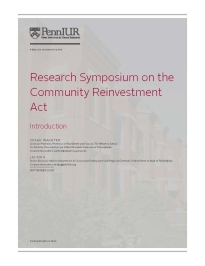Key Message
The CRA remains a vital tool for promoting equitable access to credit and fostering community development, despite the evolving financial landscape. The symposium papers’ highlight the persistent challenges of discrimination and disinvestment in historically redlined communities, demonstrating that these issues still need to be addressed. The CRA has successfully increased lending to low- and moderate-income (LMI) communities, but the rise of nonbanks and fintech companies, which are not covered by CRA regulations, presents new challenges.
To modernize the CRA, the papers suggest several reforms:
• Updating Assessment Areas: Expanding the definition of assessment areas to include regions served by nonbank and online lenders to ensure all underserved communities benefit from CRA activities.
• Improving Data Collection and Transparency: Enhancing data reporting to provide more accurate and transparent evaluations of CRA performance, including better tracking of loans to LMI borrowers.
• Clarifying Eligible Activities: Establishing clear standards for what qualifies for CRA credit to help banks plan and execute their CRA obligations more effectively.
• Balancing Quantitative and Qualitative Metrics: Using a combination of quantitative and qualitative measures to evaluate CRA performance, ensuring that the full scope of community development activities is captured.
The introduction concludes that the CRA must evolve to remain relevant and effective in addressing the needs of underserved communities. By incorporating these proposed reforms, the CRA can continue to promote fair access to credit and support the revitalization of disinvested neighborhoods, ensuring that the benefits of economic growth are shared more broadly.


